한식 읽기 좋은 날
Vol 60. The Joy of Grilling
Foods and Attractions of a Fortress City: Suwon, a Mecca for Foodies An Epicurean Journey
Foodie Travels
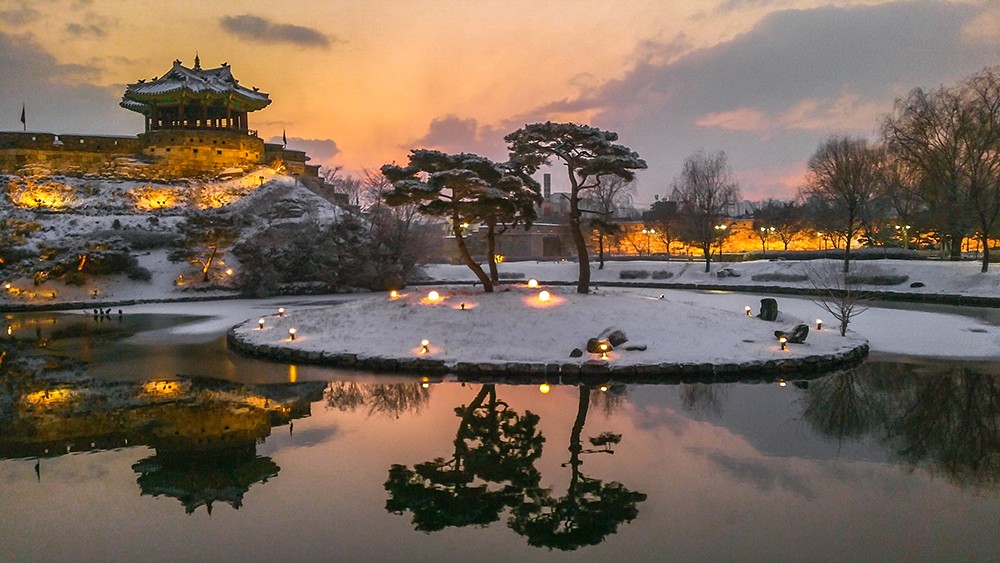
Banghwasuryujeong Pavilion, Hwaseong (C) Korea Tourism Organization Photo Gallery (Lee Doeun)
Suwon is a long-time favorite destination among foodies in Korea. One major reason for this is the presence of many local specialties, such as wanggalbi and fried chicken. There are also outdoor markets with decades-old roadside shops that serve generous portions of gukbap (hot bowl of soup with rice). Haenggung-dong and Nammun Market are home to many old restaurants, with aged signboards, that are still thriving. As the city of choice of King Jeongjo, the 22nd king of the Joseon dynasty, Suwon has a centuries-long history as a “hotspot.” With a UNESCO World Heritage Site (Hwaseong Fortress) and a wide range of foods, Suwon is the perfect day-trip destination.
Article and photos Kim Jeongheum (travel writer)
Famous restaurants from Joseon to the present
In the Joseon dynasty, Suwon was the final stop on the road to Hanseong (the capital city) taken by those living in outlying provinces who qualified to take the civil service exam. Because of the city’s large beef market, galbitang (short rib soup) was a favorite among test-takers. In late Joseon, King Jeongjo decreed the construction of a “new town” in Suwon. In other words, it was a pre-modern “hotspot.”
Perhaps it is because of its Joseon-era fame that Suwon was long regarded by foodies as a must-go location. There are still shops and restaurants near Hwaseong Fortress that have been around for decades. The first food to come to mind is, obviously, wanggalbi. As they say about the fragrant, delectable flesh attached to large rib bones, “everyone has a first time, but there is no one who eats only once.”
The practice of grilling beef ribs seasoned only with salt is already over 70 years old. Restaurants like the richly-storied Hwachoonok and the “galbi troika of Suwon” (Kabojung, Bonsuwon Galbi, and Shilla Galbi) continue to rewrite the history of Suwon wanggalbi.
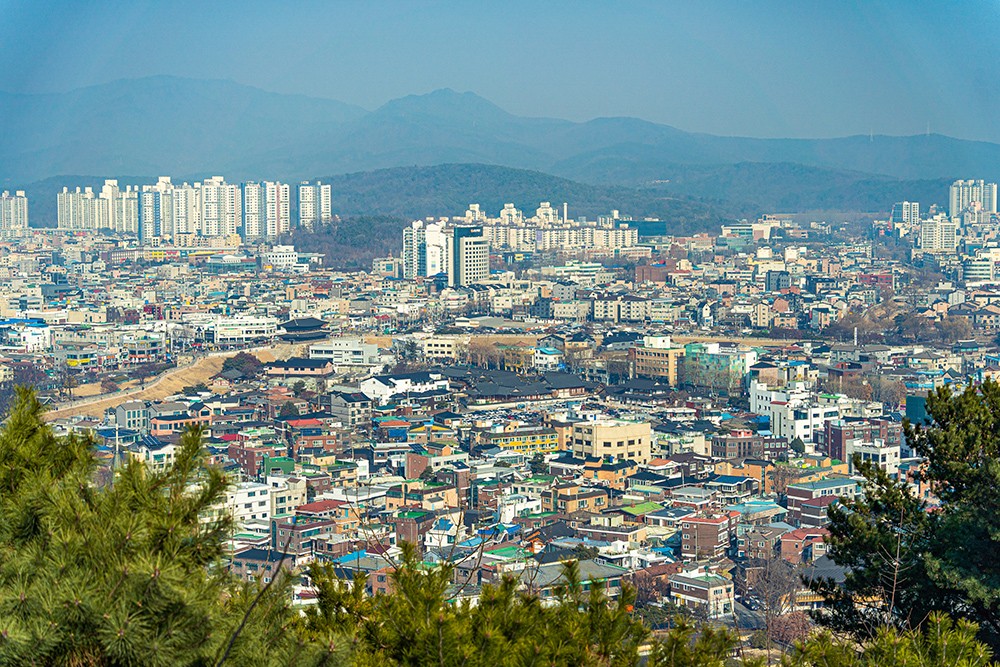
Downtown Suwon as seen from Seojangdae
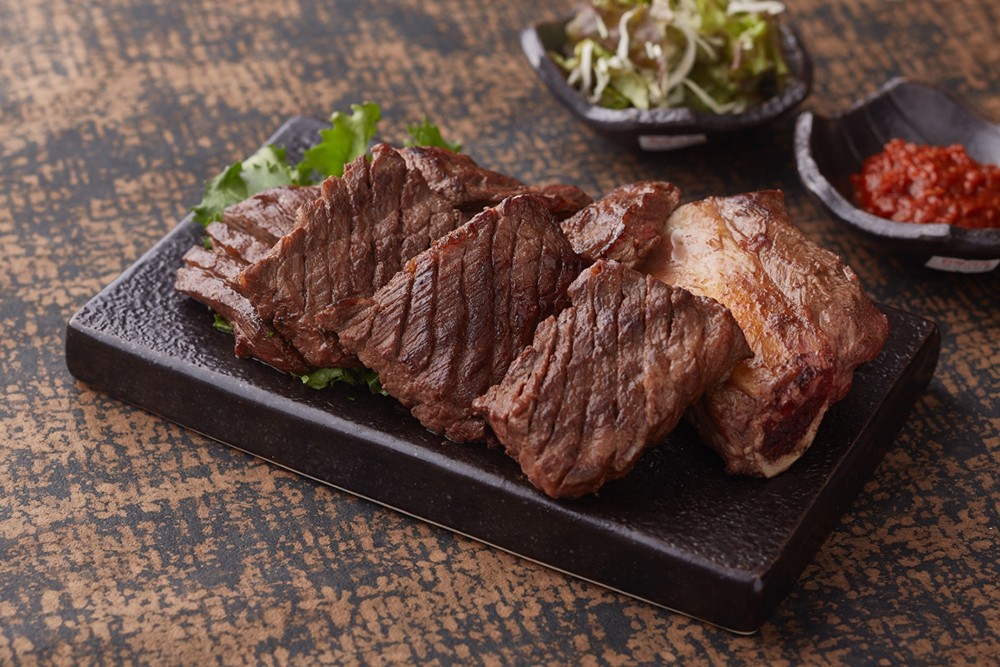
Suwon wanggalbi (C) Korea Tourism Organization Photo Gallery
Haenggung-dong, a mecca for food-savvy Gen MZ
Recently, Suwon’s reputation as a “flavor capital” has been shifting from a focus on wanggalbi to a diverse range of other foods and desserts. At the center of this shift is Haenggung-dong, a southern district of Suwon that is especially popular among Gen MZ visitors. In the past, it was largely known only for being near Hwaseong Fortress and as a filming location for the drama Jewel in the Palace or movie Our Beloved Summer. Today, it is full of popular restaurants and cafés that are popular with younger visitors.
Another trait of Haenggung-dong is that even the smallest business has something to offer. You will find that alleyways are crammed with creatively-themed cafés and roasteries that sell high-quality coffee beans. Rather than there being only one or two main attractions, Haenggung-dong has something for every taste or hobby. Visitors can have fun choosing a café that serves a favorite signature dish or is designed in a favorite theme.
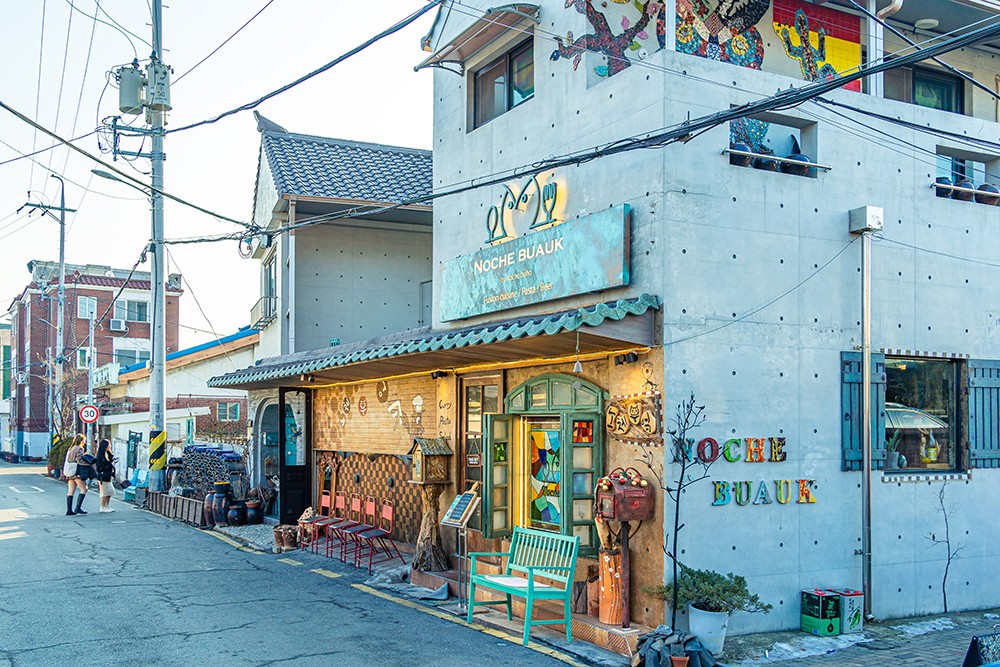
Haenggung-dong Café Street
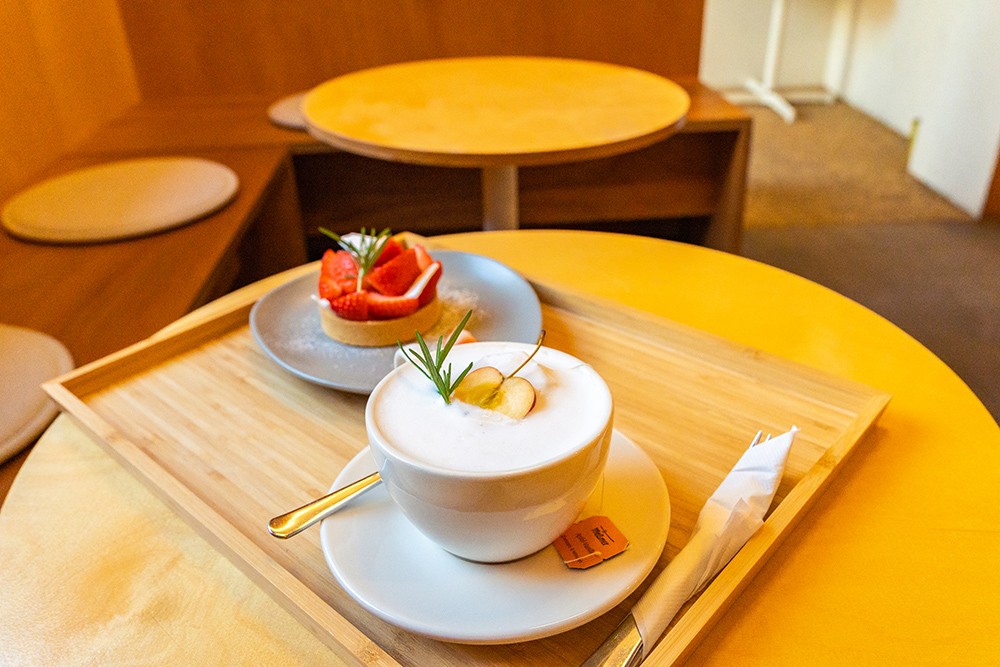
Menu item of a café located on Haenggung-dong Café Street
Hwaseong Fortress, the reason for the construction of a “new town”
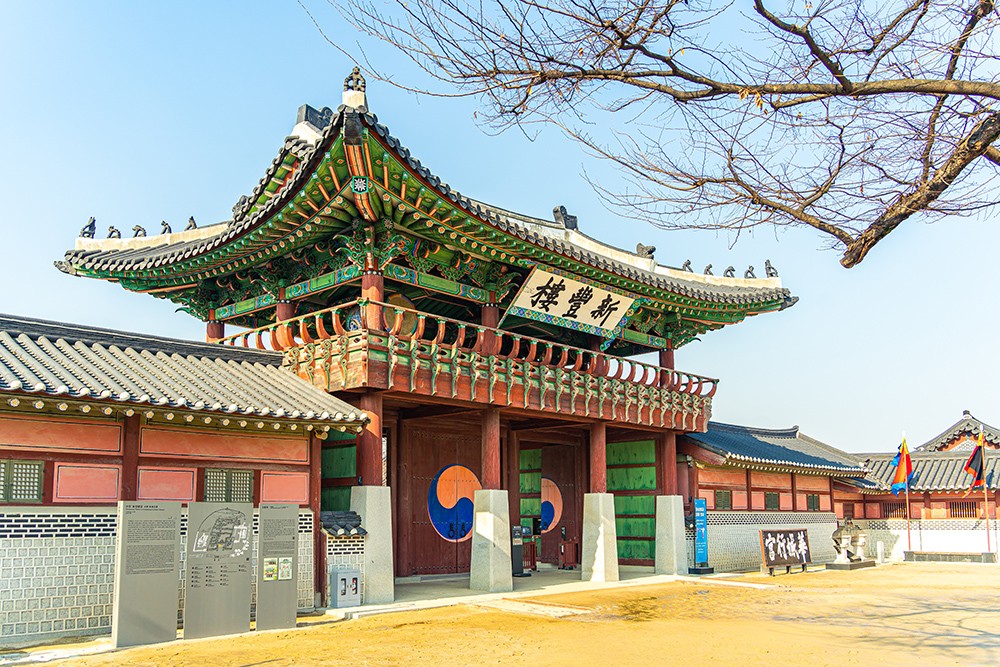
Temporary Palace at Hwaseong Fortress
Not to be forgotten in the abundance of restaurants and cafés in Haenggung-dong is Hwaseong Fortress—the crowning jewel that completes the district’s atmosphere. Before taking a stroll along the fortress wall starting from Haenggung Palace, it’s best to know a few facts about the fortress itself.
Hwaseong Fortress was constructed under the reign of King Jeongjo. It all began when he moved the tomb of his father, Crown Prince Sado, to Hwasan (today, Hwaseong) because of its excellent feng shui conditions, and had Hwasan locals move to Suwon. The act was a highly political one: by transferring his father’s tomb, Jeongjo hoped to strengthen his tenuous claim to legitimacy (as his father had been murdered before actually becoming king) and, subsequently, govern based on his own power rather than having to rely on in-law politics. Another reason for his selection of Suwon was the realization that, following the Imjin War, the southern part of Hanyang needed stronger defense. It is due to these factors—one ideological/personal and one practical—that Jeongjo aggressively implemented the largest “new town” construction ever attempted in the Joseon dynasty.
Unfortunately, the fortress that stands today is not the original. The original fortress was almost completely destroyed during the Japanese colonial period and Korean War. What we have today is a restoration—although one that is said to be very accurate. Hwaseong Seongyeok Uigwe (Royal Protocols on Hwaseong Fortress), a book that records the entire process of the original fortress’ construction, played a key role in the restoration project. Had records not been so prioritized by the Joseon dynasty, we may not have a Hwaseong Fortress today at all. It is also thanks to this book that the fortress was recognized by UNESCO as a World Heritage Site.
If you wish to learn more about the fortress’ history, make sure to visit Suwon Hwaseong Museum, which is dedicated exclusively to Hwaseong Fortress. The focus of the museum is the fortress’ original appearance/structure and the history related to it. Visitors can learn why and how it was built and how Suwon evolved after its construction. After the museum tour, you will see Hwaseong Fortress in a very different light.
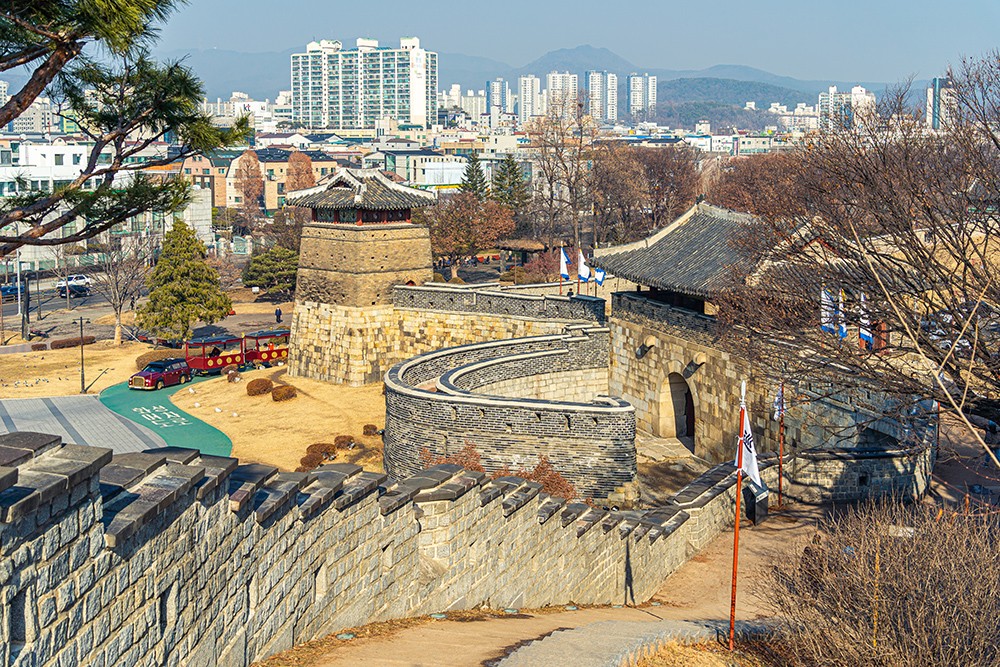
Suwon Hwaseong Fortress
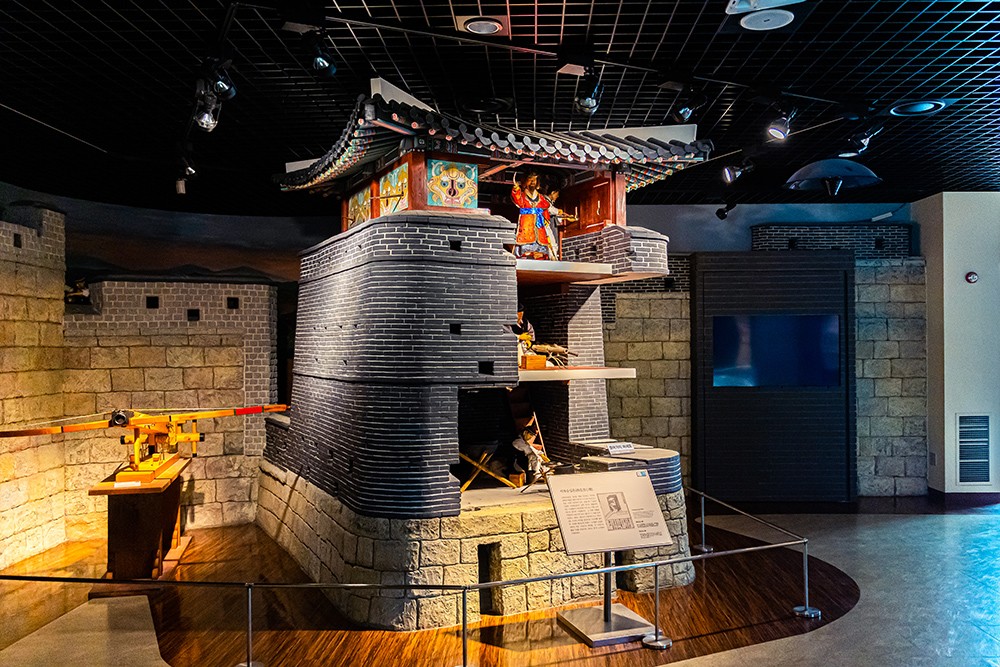
Suwon Hwaseong Museum
Walking along the fortress trail
After leaving the museum, it is best to take a walking tour of the fortress itself. Most start at Paldalmun Gate, but Hwaseong Haenggung Palace is a good alternative. Haenggung Palace, which is a central fixture of the fortress, was built as a place for King Jeongjo to stay whenever he visited Suwon. There are many records of King Sunjo, King Heonjong, and King Gojong having spent the night there as well. Haenggung Palace is said to have been built by extending/altering an existing government office building.
Behind Haenggung Palace is a path that leads to Seojangdae. Located at the summit of Paldalsan Mountain, Seojangdae is a former military command post that offers a view of not only Crown Prince Sado’s grave, Yungneung, but also the beacon mound of Seokseongsan in neighboring Yongin. The signboard displaying the calligraphy of King Jeongjo suggests that Seojangdae had high standing. After enjoying the view, you can continue walking to the northern gate, Janganmun.
Janganmun is interesting because it is the fortress’ main gate, contrary to convention at the time that favored positioning the main gate to any major structure at the south. The unusual location suggests that it was where the king entered when coming from Hanyang. The fortress trail will take you past Janganmun, Hwahongmun Gate, Banghwasuryujeong Pavilion, and Dongjangdae before reaching Jidong Market. The market is right next to Paldalmun, which makes the walk a full lap around the fortress. One point to keep in mind is that Hwaseong Fortress is very large: so be careful not to take on more than you can chew in terms of walking. Another tip is that the most popular section of the trail is between Seojangdae and Dongjangdae—because of the beautiful view this spot offers at sunset.
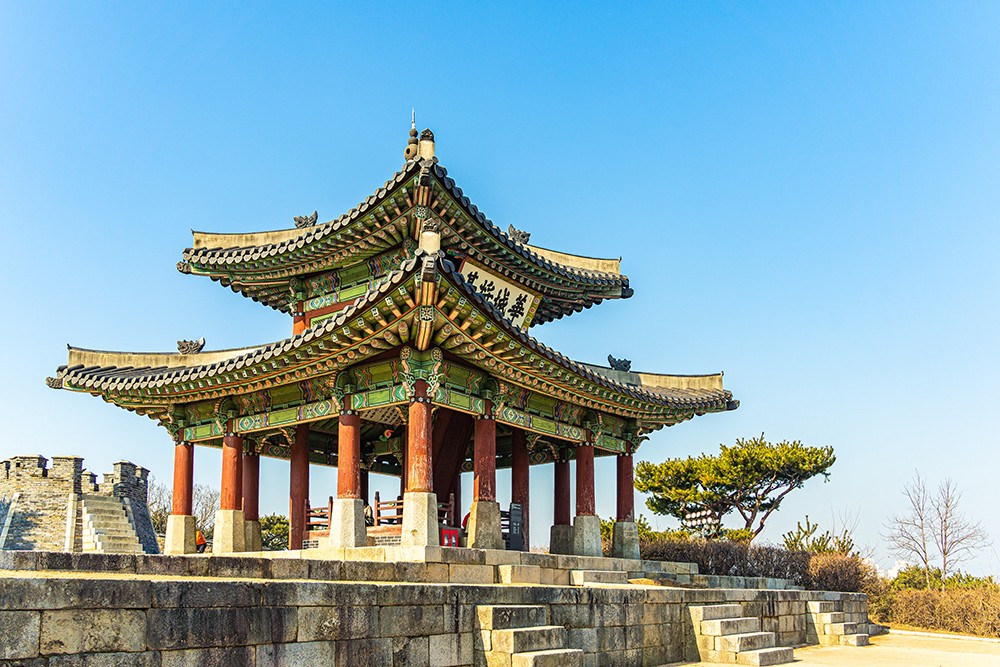
Seojangdae
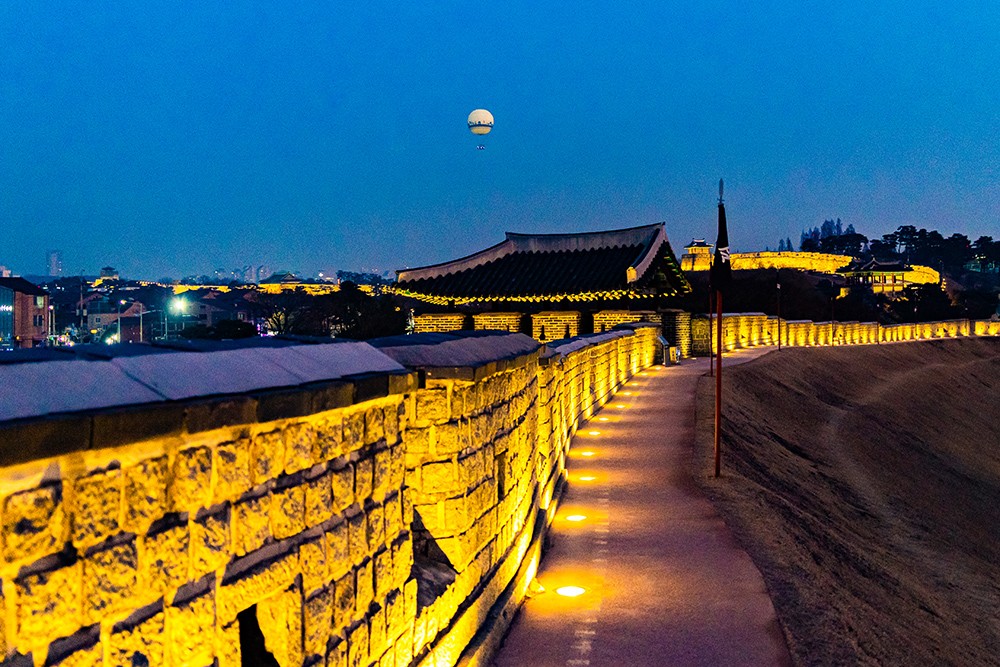
Nighttime view of Suwon Hwaseong Fortress
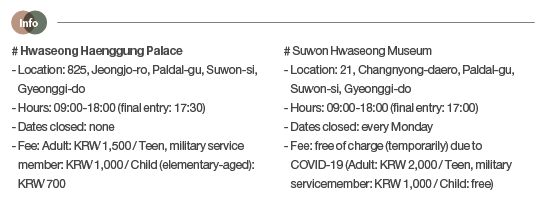

 한국어
한국어
 English
English






